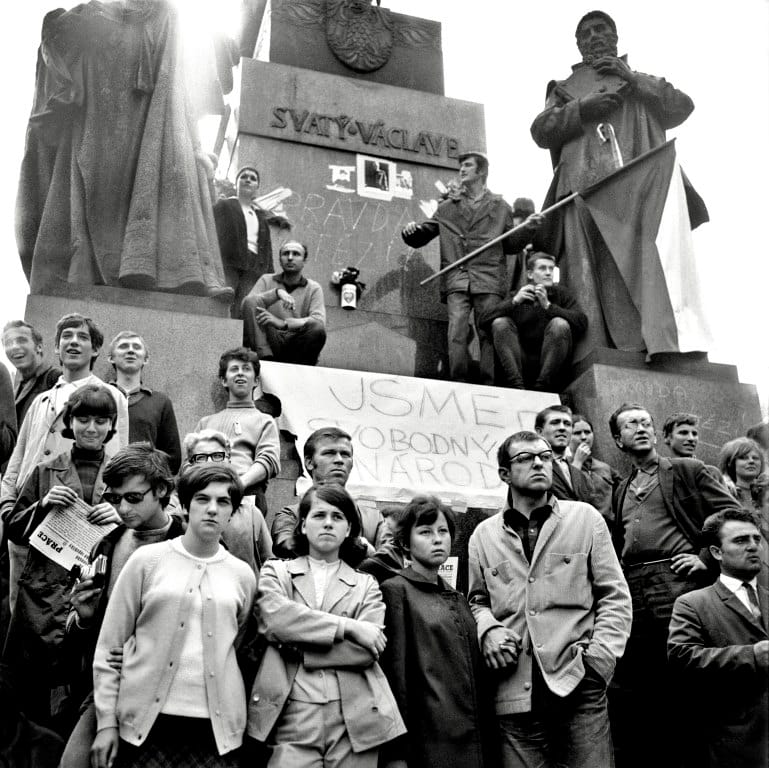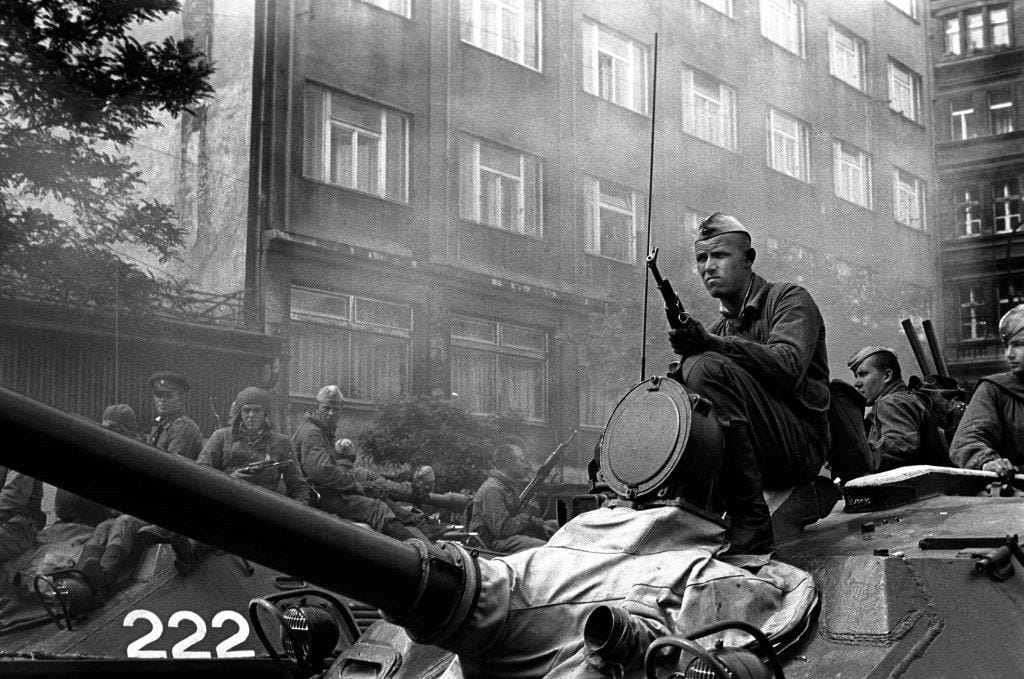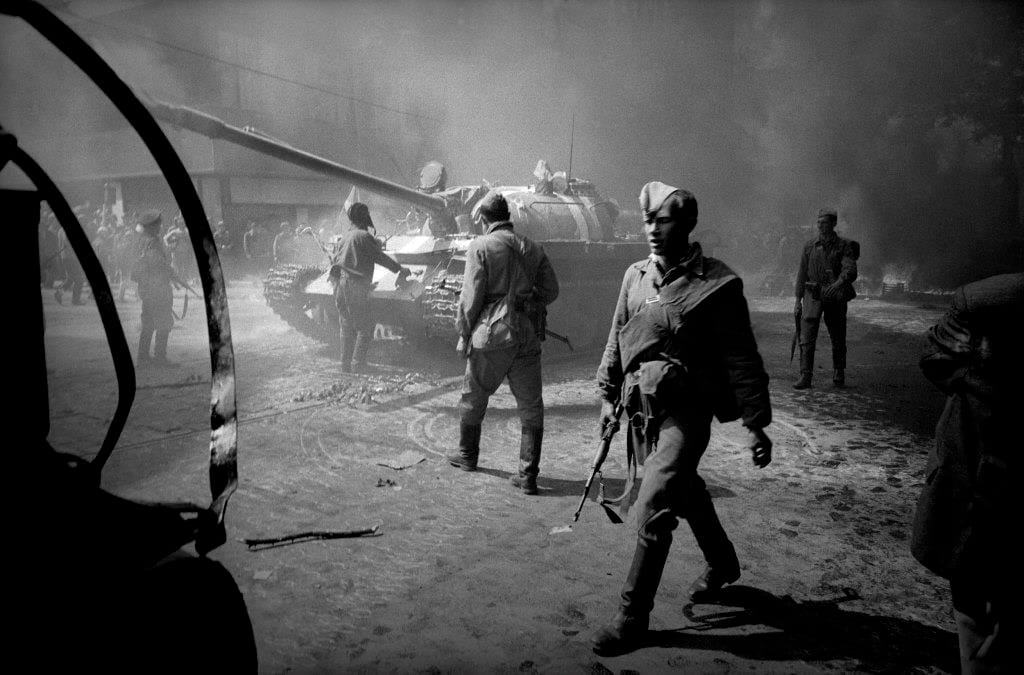The Photos that Captured the First Day of the Soviet Invasion of Czechoslovakia
Exhibiting a series of images from only one day effectively gives viewers a sense of this historical moment.

August 21, 1968 at the Czech Center New York features 20 images of dynamic photo-reportage capturing the first day of the Soviet Invasion of Czechoslovakia. The exhibition includes many supporting infographics and texts which provide general historical context, a timeline of the invasion, and a cataloguing of the number of troops entering Czech territory. For American visitors these materials are informative — many viewers likely only have a vague sense of the Prague Spring as a liberalization of Czech society in 1968 that threatened Soviet rule and serves as the setting for Milan Kundera’s The Unbearable Lightness of Being. But these materials arguably also offer a heavy-handed (even nationalistic) treatment of photographs that are compelling enough to stand on their own.


The black-and-white images have a visual density, a compellingly crowded composition. A photo by Vladimír Lammer shows a solitary man with a briefcase gazing at a row of tanks passing by. (This image was published anonymously at the time. Although all the photos in the exhibition were taken by professional photographers, very few of the other images were published contemporaneously due to the danger of doing so in a Czech publication after the invasion.) In Lammer’s photo, the tip of a tank appears in the image’s foreground, with a bit of rubble just beyond it. The photo suggests multidirectional movements: the passing of tanks, the dumped rubble, the gaze of a man who looks as if he has been stopped on the way to work. The viewer’s eye moves circularly to take it all in, giving the photograph striking depth.


An image by Jiří Stivín captures a tank mid-roll over a crushed small bus — one can almost imagine the sound of metal crushing metal. Smoke billows to the side, partially obscuring the view of another bus. Bystanders on the street look on; perhaps they are waiting for an intact bus while watching the tank’s deadly path.
In addition to chaos and violence, the images show citizens’ defiance. In a photo by Vladimír Lammer protestors stand with a sign that reads “We are a free nation.” A photograph by Miloň Novotný depicts marchers in Old Town Square carrying a banner that reads simply “Go Home.”

Exhibiting a series of images from only one day effectively gives viewers a sense of the historical moment. In this sense, the show has a focused lens, both from a curatorial standpoint and for exhibition goers. This specificity encourages a deep engagement with each image as a piece of a day. However, the show’s layout features supporting materials too strongly, detracting from the photos’ time-bounded, thematic focal point. A visual foregrounding of the photographs would have further enhanced their potency.

August 21, 1968 continues at Czech Center New York (321 East 73rd Street, Upper East Side, Manhattan) through October 5.




